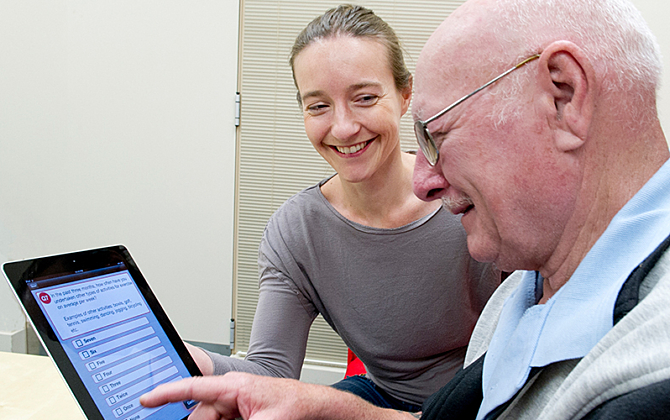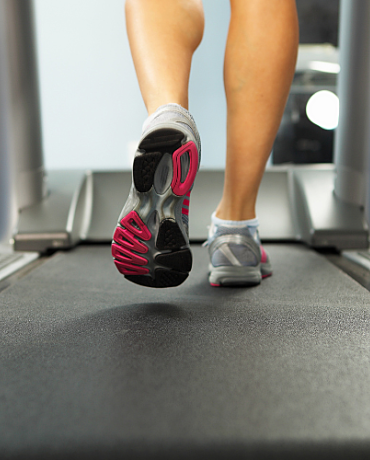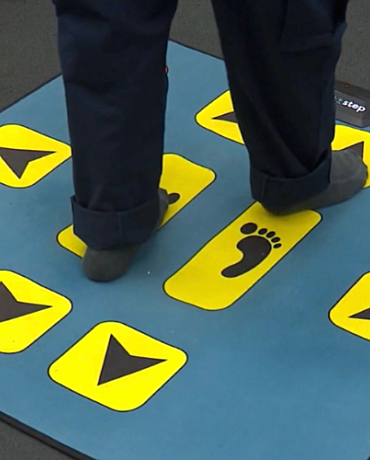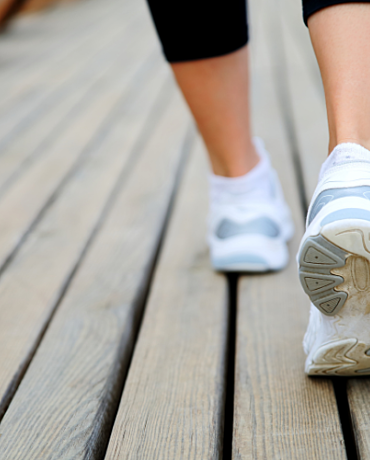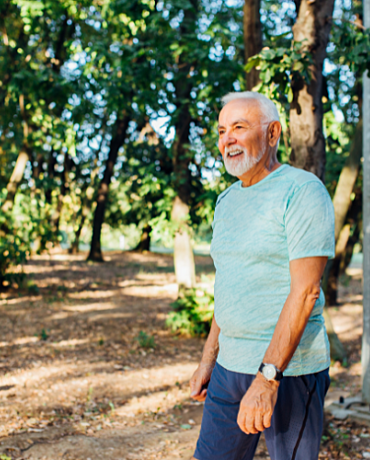Falls are the leading cause of injury-related death and hospitalisation in people aged 65 years and over. At least 40% of people who have been hospitalised because of a fall require subsequent care in a nursing home. A further 10% need ongoing assistance at home from community services.
The rate of falling in older people living in nursing homes is even higher, with various studies reporting fall rates of between 40% and 56% in elderly residents each year.
Poor balance is the cause of the majority of falls in older adults. Human balance depends on the interaction of our senses of sight, touch, etc. and our ability to control the movement of our bodies. These abilities decline significantly as we age, which can lead to falls, even when there are no identifiable neurological or musculoskeletal problems.
Our balance and falls research focuses on vision, leg sensation, lower limb strength, reaction time and postural stability to understand additional risk factors. We also look at footwear-surface interactions, confusion and dementia, eyewear, hospital settings, fear and risk-taking behaviour.
Preventing falls
Falls are the leading cause of injury-related death and hospitalisation in people aged 65 years and over. So ensuring that a person’s home is safe and unlikely to cause falls can best prevent this. This means consideration of issues around the home such as:
- Making sure that lighting is not too dim or too direct, and that light switches are easily accessible.
- The edges of carpets and rugs should be tacked down.
- Bathrooms should have a chair for bathing or skid-resistant mats, grab bars and a toilet seat tall enough for easy transferring.
- Kitchen items that are frequently used should be at waist level or on low shelves, a rubber mat should be placed in front of the sink and non-slip wax should be used on the floor.
- Stairways need handrails and steps should be slip-resistant.
Other considerations include having regular eye-checkups and wearing comfortable, sensible flat shoes for improved mobility.
Regular, comfortable exercise that includes strength training and cardio can also improve confidence and prevent falls.
Our research approaches
NeuRA’s aim is to enhance understanding of human balance through investigations of the sensory and motor systems.
Our current studies in this area investigate the physiology (such as speed and strength) of standing, walking, stepping reactions, slips and the design safe footwear for older adults. We are also looking at behavioural (high versus low risk-taking tendencies) factors.
Research is underway to develop, implement and systematically evaluate falls and injury prevention strategies for hospital patients and other groups of people known to be at an increased risk of falls.
We have developed and tested numerous physiological tests to identify those at risk of falling. The tests can predict 75 per cent of those likely to fall. The physiological profile assessment NeuRA has developed (called FallScreen) is now used widely both clinically and in fall prevention trials throughout Australia and across the world.
NeuRA is also evaluating potential fall-related and health benefits of a home-based step training intervention. The intervention will target key underlying causes of falls including slow and inaccurate stepping performance, poor controlled leaning balance and impaired executive functioning. This project will evaluate a promising home-based exercise strategy for preventing falls in people with multiple sclerosis. The results will provide solid scientific evidence to include in fall management programs for people with this condition.
Our research discoveries
NeuRA has developed and validated a home-based computerised training intervention that can be delivered while the client is seated (cognitive) or while standing and undertaking balance exercises (cognitive+motor). This unique design will allow us to assess whether cognitive and cognitive+motor training can prevent falls. Additionally it will enable us to assess the neural, physiological, physical and neuropsychological mechanisms behind the intervention effects. This intervention holds promise for a cost-effective fall prevention strategy with multiple health benefits for older people.
